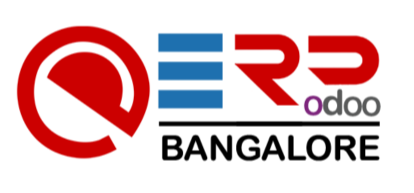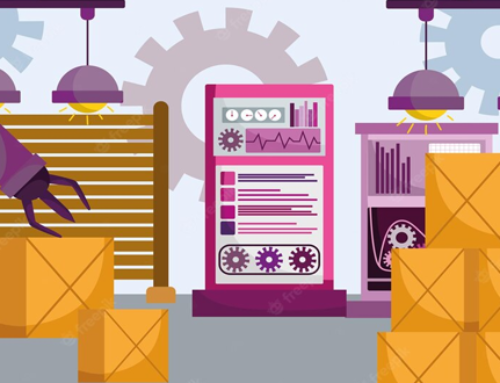Table of Contents
ToggleIntroduction to ERP Software
Enterprise Resource Planning (ERP) software stands as a pivotal tool in the modern business landscape, offering an integrated suite of applications that manage core business processes, such as finance, HR, manufacturing, supply chain, services, procurement, and others, in a unified system. The evolution of ERP systems has been marked by significant milestones, from the basic inventory management and control systems of the 1960s to the comprehensive, interconnected solutions we see today, capable of managing complex business functions and processes across global enterprises.
The inception of ERP can be traced back to the 1960s, with systems designed to control inventory and manage manufacturing processes. However, it wasn’t until the 1990s that the term “ERP” was coined, reflecting the system’s expansion beyond manufacturing into other core business areas, integrating a wide array of functions into one seamless application. This evolution was driven by the increasing complexity of business operations and the need for integrated, real-time data access to make informed decisions.
In the digital age, ERP systems have transcended their original scope, offering cloud-based solutions, advanced analytics, and real-time data processing capabilities. They serve as the backbone of enterprise operations, enabling businesses to streamline processes, improve efficiency, and gain a competitive edge in the rapidly changing market landscape.
By understanding the origins and development of ERP software, businesses can better appreciate the critical role it plays in their operations and the potential it holds for future innovations in enterprise management.
Definition of ERP Software
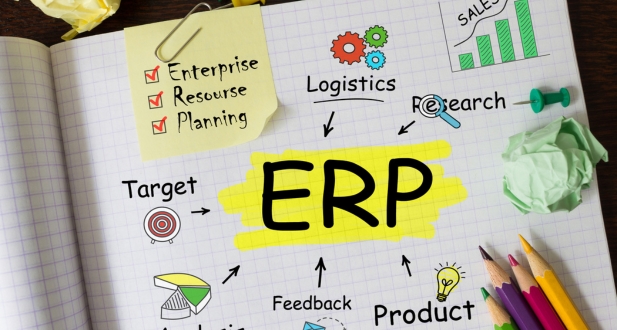
Enterprise Resource Planning (ERP) software is a comprehensive suite of integrated applications that an organization uses to collect, store, manage, and interpret data from various business activities. ERP systems facilitate the flow of information between all business functions inside the boundaries of the organization and manage the connections to outside stakeholders.
ERP software integrates core business processes, such as finance, HR, manufacturing, supply chain, procurement, and others, into a single system to streamline operations and information across the organization. This allows businesses to achieve greater efficiency and accuracy in their operations, as the integrated system eliminates redundant processes and data, ensuring that every department relies on a single source of truth.
The key features of ERP systems include:
- Integration: ERP software integrates various business processes into one comprehensive system, facilitating seamless data exchange and process automation across departments.
- Automation: It automates routine tasks, such as order processing, invoice generation, and payroll, reducing the need for manual intervention and increasing operational efficiency.
- Data Analysis: ERP systems offer advanced reporting and analytics tools that help businesses analyze data in real-time, supporting better decision-making and strategic planning.
- Scalability: They are scalable, meaning they can be customized and scaled to meet the changing needs of a business as it grows.
- Flexibility: Modern ERP solutions offer flexibility in deployment options (on-premise, cloud-based, or hybrid) and can be tailored to fit the specific needs of various industries and business sizes.
ERP software is designed to break down silos within an organization by providing a single, integrated solution that supports the efficient and transparent flow of information across all departments. This holistic approach ensures that all key decision-makers within an organization have access to up-to-date, accurate information, enabling them to make informed decisions that drive business growth and efficiency.
The evolution of Enterprise Resource Planning (ERP) systems is a fascinating journey that reflects the broader trends in technology, business management, and organizational needs over the decades. This progression from basic inventory management solutions to today’s complex, integrated systems demonstrates how ERP has adapted to meet the growing demands of businesses for efficiency, scalability, and real-time data access.
Evolution of ERP
1960s: The Beginning
- Inventory Management Systems: The origins of ERP can be traced back to the 1960s, with the development of inventory management and control systems. These early systems focused on monitoring stock levels, balancing supply and demand, and reordering inventory, laying the groundwork for what would eventually become ERP.
1970s: MRP Systems
- Material Requirements Planning (MRP): In the 1970s, the focus expanded to include material requirements planning (MRP) systems. MRP was designed to meet manufacturing needs, including planning, scheduling, and inventory control, by using data from bill of materials (BOM), inventory data, and the production schedule.
1980s: MRP II
- Manufacturing Resource Planning (MRP II): Building on MRP, the 1980s saw the emergence of Manufacturing Resource Planning (MRP II). MRP II added more functionality to the original MRP systems, incorporating aspects of production planning, shop floor control, and other manufacturing processes. It was during this era that the systems began to integrate more comprehensive manufacturing processes and data, setting the stage for the ERP systems we recognize today.
1990s: The Birth of ERP and Expansion
- Enterprise Resource Planning (ERP): The term “ERP” was first coined in the early 1990s by the Gartner Group. This period marked a significant evolution as systems transitioned from manufacturing-centric solutions to integrated systems covering a broad range of back-office functions, such as finance, HR, and supply chain management. The expansion beyond manufacturing was a critical turning point, making ERP relevant to a wide array of industries and sectors.
2000s: Internet and Globalization
- Web-Enabled ERP: The advent of the internet and the acceleration of globalization in the 2000s transformed ERP systems. Web-enabled ERP allowed for real-time data access from anywhere, fostering more connected and integrated global business operations. This period also saw the rise of ERP vendors expanding their offerings to include customer relationship management (CRM), supply chain management (SCM), and business intelligence (BI).
2010s: Cloud Computing and Mobile ERP
- Cloud-Based ERP: The proliferation of cloud computing significantly impacted ERP systems by offering more flexible, scalable, and cost-effective solutions. Cloud ERP enabled smaller businesses to leverage the power of ERP without the need for substantial upfront investment in IT infrastructure.
- Mobile ERP: The rise of mobile technology allowed for ERP functionalities to be accessible via smartphones and tablets, enhancing the flexibility and accessibility of business data and processes.
2020s and Beyond: AI, IoT, and More
- AI and Machine Learning: The integration of artificial intelligence (AI) and machine learning into ERP systems is enabling more advanced analytics, predictive insights, and automation of routine tasks.
- Internet of Things (IoT): IoT integration is transforming ERP systems by providing real-time data from a myriad of connected devices, further enhancing operational efficiency and data accuracy.
- Sustainability and Social Responsibility: Modern ERP systems are increasingly incorporating features that help businesses manage their environmental impact and sustainability goals.
The evolution of ERP reflects a continuous journey towards more integrated, intelligent, and user-friendly systems that support the dynamic needs of modern businesses. As technology advances, ERP systems will continue to evolve, embracing new innovations to help organizations navigate the complexities of global business landscapes.
The importance of Enterprise Resource Planning (ERP) software in modern business operations cannot be overstated. ERP systems play a crucial role in enhancing efficiency, improving productivity, and facilitating informed decision-making across organizations. Here are some key aspects that highlight the importance of ERP software:
Importance of ERP Software
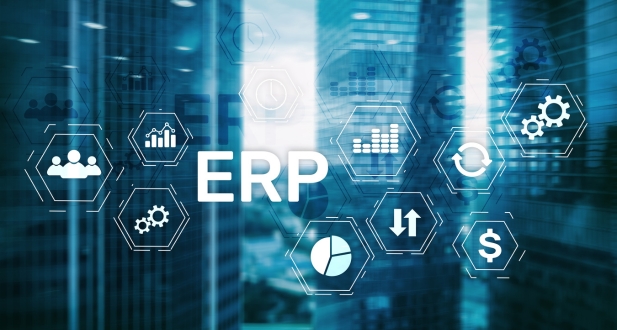
1. Integration of Business Processes
ERP software integrates disparate business processes into a single, coherent system, enabling seamless data flow between departments. This integration helps eliminate data silos, ensuring that all departments work with consistent and accurate information. For example, sales orders automatically flow into the financial system without any manual re-entry, reducing errors and increasing efficiency.
2. Real-time Information and Reporting
ERP systems provide real-time access to critical business data, enabling managers and executives to make informed decisions swiftly. The ability to generate comprehensive reports and perform in-depth analyses on various aspects of the business (like sales trends, inventory levels, and financial performance) is invaluable for strategic planning and operational management.
3. Improved Efficiency and Productivity
By automating routine tasks and standardizing business processes, ERP software significantly reduces manual labor and minimizes errors. This automation extends across various domains, including order processing, invoicing, payroll, and more, allowing employees to focus on more strategic tasks that add value to the business.
4. Scalability
ERP systems are designed to be scalable, meaning they can grow and adapt as a business expands. Whether a company needs to add new functionalities, manage more transactions, or incorporate additional departments into its system, ERP software can accommodate these changes, supporting long-term growth.
5. Enhanced Data Security
With critical business data centralized in an ERP system, security is significantly enhanced. ERP systems include robust security features, such as access controls and user permissions, ensuring that sensitive information is protected and only accessible to authorized personnel.
6. Regulatory Compliance and Risk Management
ERP software helps businesses comply with industry standards and regulations by providing tools and frameworks to maintain accurate records, enforce data security protocols, and manage financial operations transparently. This is particularly important in highly regulated industries like finance, healthcare, and manufacturing.
7. Improved Customer Service
ERP systems often include or integrate with Customer Relationship Management (CRM) components, enabling businesses to better understand and serve their customers. By having access to detailed customer information and history, companies can tailor their services to meet customer needs more effectively, enhancing satisfaction and loyalty.
8. Global Operations Management
For businesses operating on a global scale, ERP software facilitates the management of multiple currencies, taxation rules, and compliance requirements across different countries. This capability is essential for multinational companies that need to navigate the complexities of international trade and operations.
9. Cost Reduction
By streamlining operations, reducing manual effort, and improving decision-making, ERP systems can lead to significant cost savings. Reduced operational and administrative costs, along with the minimized risk of financial errors, contribute to the overall financial health of an organization.
10. Competitive Advantage
In an increasingly competitive business environment, having an efficient, scalable, and integrated ERP system can provide a significant competitive advantage. The insights and efficiencies gained from a well-implemented ERP system enable businesses to innovate, adapt to market changes more quickly, and deliver value to their customers.
In summary, ERP software is integral to modern business operations, offering a multitude of benefits that enhance operational efficiency, data integrity, and strategic decision-making. Its role in integrating business processes, providing real-time insights, and supporting growth makes it an indispensable tool for organizations aiming to maintain a competitive edge in today’s dynamic business landscape.
Types of ERP Systems
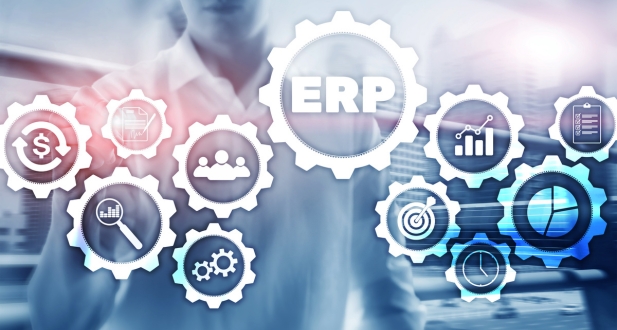
Enterprise Resource Planning (ERP) systems come in various types, each designed to meet the specific needs and constraints of different businesses. The choice among these types often depends on factors like company size, budget, industry requirements, and business objectives. Here are the primary types of ERP systems:
1. On-Premise ERP
- Description: On-premise ERP systems are installed locally on a company’s hardware and servers and are managed by the company’s IT staff. This type offers the highest level of control and customization.
- Best for: Large enterprises that require extensive customization and have the necessary IT infrastructure and resources to manage the system in-house.
- Advantages: Full control over the ERP environment, data security, and customization.
- Challenges: High upfront costs for licenses, hardware, and infrastructure; requires a dedicated IT team for maintenance and updates.
2. Cloud-Based ERP (SaaS)
- Description: Cloud-based ERP, also known as Software as a Service (SaaS), is hosted on the vendor’s servers and accessed through a web browser. This model offers a subscription-based pricing model.
- Best for: Small to medium-sized businesses (SMBs) and companies looking for scalability, flexibility, and reduced upfront costs.
- Advantages: Lower initial costs, scalability, ease of access from any location, and the vendor handles maintenance and updates.
- Challenges: Dependence on the internet connection, recurring subscription fees, and less control over data security.
3. Hybrid ERP
- Description: Hybrid ERP systems combine elements of both on-premise and cloud-based solutions, allowing businesses to enjoy the benefits of both. Certain critical functions might be kept on-premise for security or compliance reasons, while others are hosted in the cloud for flexibility and scalability.
- Best for: Businesses that need the security and control of on-premise solutions for certain critical operations but want to leverage the flexibility and cost-effectiveness of cloud solutions for other areas.
- Advantages: Flexibility, scalability, and the ability to tailor the system to specific business needs.
- Challenges: Can be complex to integrate and manage, potentially leading to higher costs and requiring a sophisticated IT strategy.
4. Industry-Specific ERP
- Description: These are ERP systems tailored to the specific needs of certain industries, incorporating features, processes, and regulatory compliance requirements pertinent to those sectors. Examples include manufacturing, healthcare, retail, and more.
- Best for: Businesses in specialized industries that require specific functionality and regulatory compliance features built into their ERP systems.
- Advantages: Customized to industry needs, includes necessary regulatory compliance features, and provides relevant functionality out of the box.
- Challenges: Can be more expensive than generic ERP solutions and may offer less flexibility for non-standard processes.
5. Open Source ERP
- Description: Open source ERP systems are built on open source technologies and their source code is publicly available. Businesses can customize and modify the software to meet their specific needs without the licensing costs associated with proprietary systems.
- Best for: Businesses with the technical capability to customize and maintain the system, looking for a cost-effective and highly customizable solution.
- Advantages: No licensing fees, highly customizable, and a supportive community for troubleshooting and development.
- Challenges: Requires in-house or outsourced technical expertise for customization and maintenance, and may lack the support services provided by proprietary ERP vendors.
Choosing the right type of ERP system involves assessing your business’s specific needs, resources, and long-term goals. Factors such as the need for customization, budget constraints, IT infrastructure, and industry-specific requirements play a crucial role in determining the most suitable type of ERP system for an organization.
Core Features of ERP Systems
Enterprise Resource Planning (ERP) systems are designed to offer a range of functionalities that support various business processes within an organization. While ERP systems can be highly customizable, depending on the specific needs of a business, there are several core features that are commonly found across most ERP platforms. These core features form the backbone of the ERP system, enabling businesses to streamline operations, improve efficiency, and make informed decisions. Here are some of the key features:
1. Financial Management
- Description: This module manages the company’s financial transactions, including accounts payable, accounts receivable, ledger, budgeting, and asset management.
- Benefits: Ensures accuracy in financial data, enhances financial reporting and analysis, and simplifies compliance and risk management.
2. Supply Chain Management (SCM)
- Description: SCM functionalities help manage the flow of goods and services from procurement of raw materials to the delivery of finished products to the end customer.
- Benefits: Improves order accuracy, enhances delivery times, reduces costs, and improves supplier and customer relationships.
3. Human Resources Management (HRM)
- Description: This feature handles employee information, including recruitment, payroll, performance evaluations, and attendance.
- Benefits: Streamlines HR processes, improves workforce management, and enhances employee satisfaction and productivity.
4. Customer Relationship Management (CRM)
- Description: Often integrated with or part of an ERP system, CRM functionalities focus on managing interactions with current and potential customers.
- Benefits: Enhances customer service, improves sales and marketing strategies, and boosts customer retention and loyalty.
5. Inventory Management
- Description: This module helps manage inventory levels, orders, sales, and deliveries. It can also include features for warehouse management.
- Benefits: Reduces excess inventory, minimizes stockouts, and optimizes warehouse organization and management.
6. Purchasing and Supplier Management
- Description: Manages the procurement process, from purchase order creation to vendor management and payment processing.
- Benefits: Streamlines purchasing processes, improves supplier relationships, and ensures timely procurement of materials.
7. Manufacturing and Production Planning
- Description: Supports manufacturing processes, including production planning, scheduling, product lifecycle management, and quality control.
- Benefits: Enhances production efficiency, reduces production costs, and ensures product quality and compliance.
8. Project Management
- Description: Enables planning, resourcing, and managing project tasks and timelines, often integrating with financial and HR modules for budgeting and resource allocation.
- Benefits: Improves project planning and execution, enhances collaboration, and ensures projects are delivered on time and within budget.
9. Business Intelligence (BI) and Reporting
- Description: Provides tools for analyzing data and generating reports to support strategic decision-making. This includes dashboards, predictive analytics, and data visualization tools.
- Benefits: Enhances decision-making with real-time data insights, identifies trends and opportunities, and improves overall business performance.
10. Compliance and Risk Management
- Description: Helps ensure that business operations comply with legal, regulatory, and industry standards and helps manage various types of risks.
- Benefits: Reduces the risk of compliance violations, protects against data breaches, and minimizes operational and financial risks.
Conclusion
These core features are integral to the functionality of an ERP system, providing a foundation upon which businesses can build and customize their ERP solutions to meet their specific needs. By leveraging these features, organizations can improve operational efficiency, reduce costs, and enhance decision-making, ultimately driving business growth and success.
In conclusion, Enterprise Resource Planning (ERP) systems represent a pivotal innovation in the realm of business management and operations. By offering an integrated suite of applications, ERP systems facilitate the seamless flow of information across various departments within an organization, thereby eliminating data silos, enhancing operational efficiency, and fostering informed decision-making.
The core features of ERP systems, including financial management, supply chain management, human resources management, customer relationship management, and more, provide a robust framework for businesses to streamline their processes, improve productivity, and achieve scalability. These functionalities are designed to meet the diverse needs of businesses across different industries, ensuring that organizations can tailor their ERP solutions to fit their unique requirements.
With the advent of cloud-based ERP solutions, the accessibility of these systems has expanded, allowing small to medium-sized businesses to leverage the power of ERP without the need for significant upfront investment in IT infrastructure. Furthermore, the integration of advanced technologies such as AI, IoT, and machine learning into ERP systems is set to enhance their capabilities further, offering businesses even more powerful tools to navigate the complexities of the modern business landscape.
The importance of ERP systems in today’s fast-paced, data-driven business environment cannot be understated. By providing a centralized platform for managing and analyzing critical business data, ERP systems enable organizations to make strategic decisions swiftly, adapt to market changes, and maintain a competitive edge. As businesses continue to evolve and new challenges emerge, ERP systems will undoubtedly play a crucial role in shaping the future of business operations, driving efficiency, innovation, and growth.

